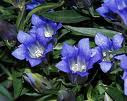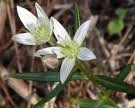:::::::::::::::::::::::::::::::::::::::::::::::::::::::::::::::::::::::::::::::::::::::::::::::::::::
YEMEN SAIJIKI
:::::::::::::::::::::::::::::::::::::::::::::::::::::::::::::::::::::::::::::::::::::::::::::::::::::

Yemen (Arabic: اal-Yaman), officially the Republic of Yemen (Arabic: al-Jumhuuriyya al-Yamaniyya) is a Middle Eastern country located on the Arabian Peninsula in Southwest Asia. With a population of about 20 million people, Yemen is bordered by Saudi Arabia to the North, the Red Sea to the West, the Arabian Sea and Gulf of Aden to the South, and Oman to the east. Yemen's territory includes over 200 islands, the largest of which is Socotra, about 415 kilometres (260 miles) to the south of Yemen, off the coast of Somalia. It is the only republic on the Arabian Peninsula. The capital is Sanaa (Sana'a).
Yemen is one of the oldest centers of civilization in the world. Between 2300 BC and the sixth century AD, it was part of the Sabaean, Awsanian, Minaean, Qatabanian, Hadhramawtian, Himyarite, and some other kingdoms, which controlled the lucrative spice trade. It was known to the Ancient Romans as Arabia Felix ("Happy Arabia") because of the riches its trade generated. Augustus Caesar attempted to annex it, but the expedition failed. The Ethiopian Kingdom of Aksum annexed it by around 520, and it was subsequently taken by the Sassanids Persians around 570.
In 1839, the British occupied the port of Aden and established it as a colony in September of that year. They also set up a zone of loose alliances (known as protectorates) around Aden to act as a protective buffer. North Yemen became independent of the Ottoman Empire in 1918 and became a republic in 1962. In 1967, the British withdrew and gave back Aden to Yemen due to extreme pressure of battles with the North and Egyptian allies. After the British withdrawal, this area became known as South Yemen. The two countries were formally united as the Republic of Yemen on May 22, 1990.
© More in the WIKIPEDIA !
:::::::::::::::::::::::::::::::::::::::::::::::::::::::::::::::::::::::::::::::::::::::::::::::::::::
YEMEN SAIJIKI
We use the four classic seasons.
There are also two rainy seasons, monsoon-like:
spring monsoon: march / april
summer monsoon: july / august
"Most of Yemen lies in the border zone between two main weather patterns: the regular northerly winds (from the Mediterranean basin) and the southwest monsoon winds. These create a fairly well-defined seasonal rhythm; the northerly winds predominate during the winter, while in the summer the southwest monsoon brings the primary rains.
Cut off from this pattern by the central mountains, the southern fringe areas on the Gulf of Aden experience a markedly tropical climate."
© www.britannica.com
Yemen: Climate and Rainfall
:::::::::::::::::::::::::::::::::::::::::::::::::::::::::::::::::::::::::::::::::::::::::::::::::::::
WKD
BIRDS of YEMEN - SAIJIKI
:::::::::::::::::::::::::::::::::::::::::::::::::::::::::::::::::::::::::::::::::::::::::::::::::::::
TOPICS
Al Khallool flute
Arab Spring
the Arab “uprising” (Intifada), the Arab “awakening” (Sahwa).
Berries, Badian berries
Bread from Lahj (khamir lahaji)
Burj Khalifa Building in Dubai
Canna lily
Chameleon, Veiled chameleon (Chamaeleo calyptratus)
Civil War, 1994
Desert, sand desert
Eid Al-Adha "Festival of Sacrifice" (Eid-ul-Adha)
Eid Al-Kabir, Aid Al Kabir
Honey badger, ratel Mellivora capensis
Henna, Hennah (Lawsonia inermis, syn. L. alba)
. Islamic Holidays, Muslim Holidays
Katydid, long-horned grasshopper, bush cricket
Khat, Catha edulis, chewing khat
Myrrh (Commiphora myrrha) Yemen
Night of Power, Lailatul Qadr / Lailat-Ul-Qadr
Orchid, orchids
Ramadan, "moon of faith"
Rose of Sharon (Hibiscus)
Sambosa, samosa Food during the Ramadan
Sana'a, Aden Sanaa, the capital of Yemen
Shawwal and fasting the month of Shawwal
Socotra Island
Tea, tea glass
Wedding
Zinnia
:::::::::::::::::::::::::::::::::::::::::::::::::::::::::::::::::::::::::::::::::::::::::::::::::::::
Yemen Public Holidays as KIGO
SPRING
Bulbul mating and nesting season
Bird egg shells
Mother's day
March 21
Prickly Pear Cactus, Opuntia FamilyFlowers
Quince flowers (blossoms) Arabic Name: Safarjal
Sodom apple blossoms
Starling, amethyst starling and other birds
Thorny-headed globe thistle
Echinops spinosissimus and other thistles
Turtles nesting
Western Reef Heron (Egretta gularis)
Woodpecker breeding Arabian woodpecker (Dendrocopos dorae)
:::::::::::::::::::::::::::::::::::::::::::::::::::::::::::::::::::::::::::::::::::::::::::::::::::::
SUMMER
Acacia blossoms
Arabian gentian Exacum affine
Barbados Pride (Caesalpinia pulcherrima)
Cotton blossoms
Dates, ripe dates from the Date Palm (Phoenix dactylifera)
Desert rose (Adenium obesum)
Dust clouds
Flame of the Forest Tree (Delonix regia)
Floods, monsoon rain
Forty days of water
Iris, bearded Iris (Iris albicans)
Jasmine
Juniper berries
Mango fruit
Melon / cool melon / watermelon
Millet planting
Mosquito net
National Unity Day, Day of National Unity
Marigold Plants in the family Asteraceae.
Prickly Pear Cactus, Opuntia FamilyFruit
Quince fruit Arabic Name: Safarjal
SW-Monsoon
dense clouds (July-August)
sea storming / storming sea or "upwelling"
runoff water
Straw hats (dholas, kofias and hadrami)
Thunderheads, lightning and rumbling thunder
Water tank (As-Saharieg)
Yemen linet (Carduelis yemenensis) Birds:
Yemen thrush (Turdus menachensis), Palm Dove (Streptopelia senegalensi) and Yemen warbler (Parisoma buryi)
:::::::::::::::::::::::::::::::::::::::::::::::::::::::::::::::::::::::::::::::::::::::::::::::::::::
AUTUMN
Black kite (Milvus migrans)
Coffee berries coffee beans
Cotton harvest, cotton bolls
eucalyptus flowers
Independence Day
Larks
Millet harvest
October in the desert
Olive, olives (fruit)
Papaya tree leaves pawpaw leaf
Revolution Day, September 26
Yellowfin tuna (thamad)
Thunnus albacares
:::::::::::::::::::::::::::::::::::::::::::::::::::::::::::::::::::::::::::::::::::::::::::::::::::::
WINTER
almond flowers
Camel, Dromedary (Camelus dromedarius) Yemen
Crow
Flamingo
Honey, Winter honey
NE-Monsoon
Oleander
Screw worm, screw worms
Sand skiing, dune skiing
:::::::::::::::::::::::::::::::::::::::::::::::::::::::::::::::::::::::::::::::::::::::::::::::::::::

General Information
. . . When Yemen Blooms
. . . Birds of Yemen
. . . More Birds of Yemen
YEMEN TIMES newspaper
:::::::::::::::::::::::::::::::::::::::::::::::::::::::::::::::::::::::::::::::::::::::::::::::::::::
[ . BACK to WORLDKIGO . TOP . ]
:::::::::::::::::::::::::::::::::::::::::::::::::::::::::::::::::::::::::::::::::::::::::::::::::::::





















